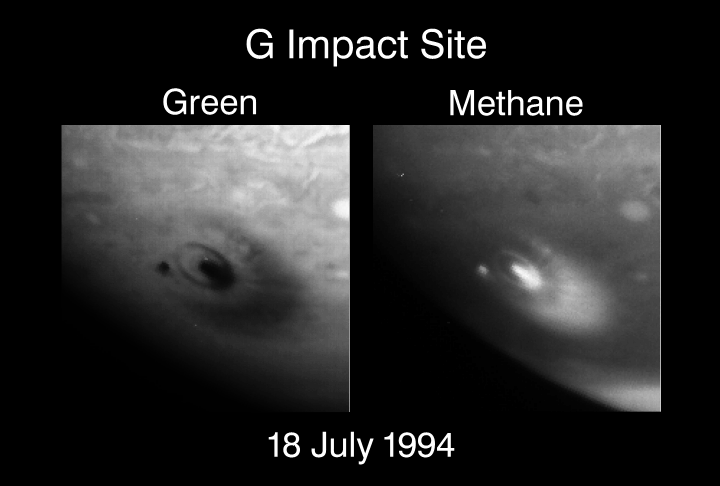The spectacular collision of comet fragment G: it struck Jupiter with an estimated energy equivalent to 6,000,000 megatons of TNT (about 600 times the estimated arsenal of the world). The fireball from fragment G rose about 2000 miles above the Jovian cloudtops and was observed by many observatories (mostly in infrared).
Fragment G was about 2 miles in diameter. Cataclysmic wouldn't begin to describe an impact of such an object with Earth. "Total obliteration" is the term you're looking for.
This is a reason why it's so handy having Jupiter out there in harm's way. Its huge gravity well pulls in many comets that otherwise could impact us.


Hubble images of the Fragment G impact site. Note the "sooty" area. It's larger than the diameter of Earth.

MSSSO Image of Fragment G Impact Zone
This image shows the bright fireball caused by the impact of fragment G with Jupiter. This view of the impact, seen 12 minutes after the actual collision, was taken in infrared light with a camera at the Mount Stromlo and Siding Springs Observatory in Australia. Due to Jupiter's tremendous size compared to the comet, astronomers did not expect the collisions to provide such dramatic effects as that seen in this image.

HST Image of Comet Fragment G Impact Plume
This series of images depicts the development of an explosive plume arising from the collision of fragment G. Scientists believe that the plume is not detached from Jupiter, as the pictures imply. Instead, only the portion of the plume that has risen into the sunlight is visible while the lower portion is hidden by Jupiter's shadow. The plume feature expands over the 18 minute period shown here and is visible in a variety of wavelengths across the spectrum.